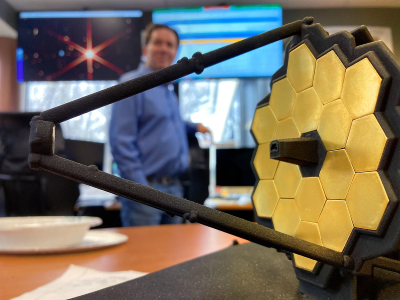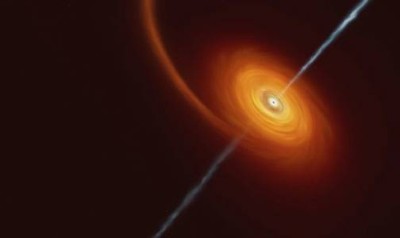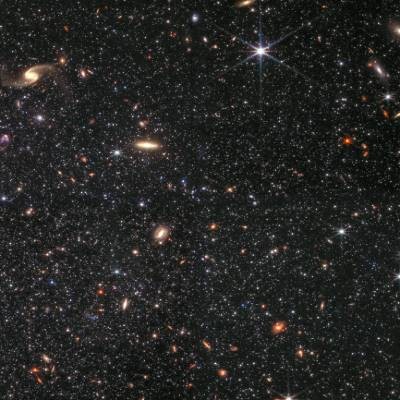Astronomers from around the world met last week to review the latest crop of research proposals for the James Webb Space Telescope (JWST). They sifted through 1,931 submissions — the most ever received for any telescope in history — and ranked them. By the time the reviewers begin releasing their decisions in late February, only one in every nine proposals will have been allotted time to collect data with JWST.

These six distant galaxies captured by JWST are wowing astronomers
The huge demand is an indicator of the space observatory’s immense success: it has wowed astronomers by spotting some of the earliest galaxies ever seen and has uncovered more black holes in the distant Universe than was predicted. Launched in December 2021, it is the hottest property in astronomy. But oversubscription leaves many sound research projects in limbo.
“The overwhelming majority of submitted JWST proposals are very good, totally worth doing, absolutely should be done if time allows,” says Grant Tremblay, an astronomer at the Harvard–Smithsonian Center for Astrophysics in Cambridge, Massachusetts. “But most of them will be rejected.”
An excited community
Table of Contents
Using JWST can take anywhere from a few minutes for a simple project to hundreds of hours for a major survey. When researchers apply for observing time, they are competing for limited slots — some of which are automatically earmarked for scientists who helped to develop the telescope, including at the European Space Agency and the Canadian Space Agency.
This is JWST’s third proposal submission-and-review cycle. During the first, the Space Telescope Science Institute (STScI) in Baltimore, Maryland, which operates JWST, received 1,084 submissions; reviewers gave the green light to one out of every five. During the second review cycle, submissions rose by about 35%, and the acceptance rate dropped to one in seven.

‘It’s a dream’: JWST spies more black holes than astronomers predicted
For the first cycle, applications were due before the telescope had even lifted off from Earth. Many astronomers were reluctant to put their energy into writing proposals for an instrument that might not succeed, says Christine Chen, leader of the group at the STScI that issues calls for proposals.
“As time has gone on, Webb has just performed so beautifully that people are having an easier and easier time envisioning how it’s going to advance their science,” she says. “It’s natural that the community is excited.”
Still, demand for JWST is unprecedented. It has surpassed that for the 33-year-old Hubble Space Telescope, its predecessor flagship observatory. Demand for Hubble has increased to some extent over time, but for most of its lifetime, reviewers have approved between one in four and one in six of the proposals submitted.
One reason for JWST’s popularity is that it has capabilities that other telescopes don’t. It is the most powerful infrared space telescope ever built, so it can observe objects in the very distant Universe and can scan the atmospheres of exoplanets for molecules that other instruments can’t see. In fact, a proposal’s specificity to JWST is one of the reviewers’ criteria. If an experiment can be done with another telescope, it will almost certainly not receive JWST time, Chen says. “We want to execute projects that you can do no other way.”
Pain points
A large portion of the JWST proposals that get rejected are resubmitted during the next review cycle. Reviewers encourage researchers to fine-tune their submissions — usually to clarify their scientific justification for a project — and try again. Tremblay, for example, had one proposal rejected during JWST’s first cycle but accepted, with some edits, in the second.

How JWST revolutionized astronomy in 2022
“High oversubscription is horrible, but it does drive rigour in the preparation [of proposals] and ensure the science is strong,” says Thomas Haworth, an astrophysicist at Queen Mary University of London. JWST cost a lot — more than US$10 billion to develop — so “we want to make sure it does the best science it can”, he adds. “But we do need to make sure that the selection process covers the appropriate breadth of science, to maximise the impact of JWST and not just make incremental gains” in astronomy.
Would-be users are not the only ones feeling the pain of JWST’s oversubscription rate. Tremblay says that the ballooning number of proposals is placing an increasing burden on those volunteering their time to be on review panels. “It’s a lot of work. I don’t think the process as it exists now can scale up much further,” he adds.
This is not a JWST-specific problem. The holder of the previous record for most proposals — the Atacama Large Millimeter/submillimeter Array (ALMA) in northern Chile — received 1,838 submissions during a review cycle that began in 2018. By 2021, ALMA, an internationally funded radio observatory studying how stars and planets form, among other things, had mostly switched to a distributed peer-review system. In this approach, a researcher who submits a proposal is required to review a certain number of their peers’ proposals in the same cycle. If they do not, their own proposals might face disqualification.
Whether or not JWST retains its current review system, astronomers’ desire to use it is likely to remain high for years to come — at least until another instrument of the same calibre opens its aperture.
